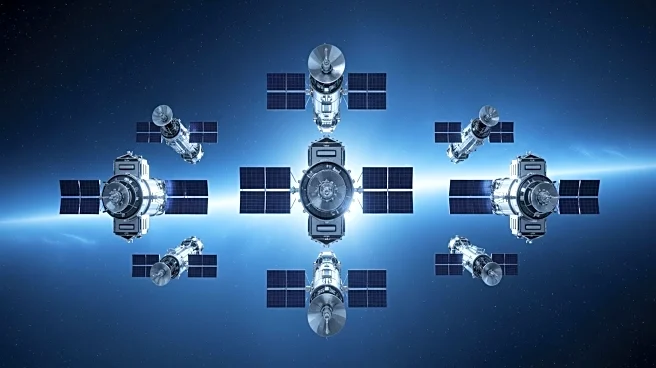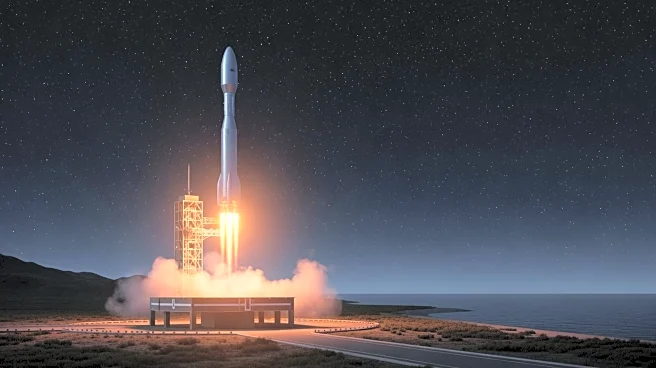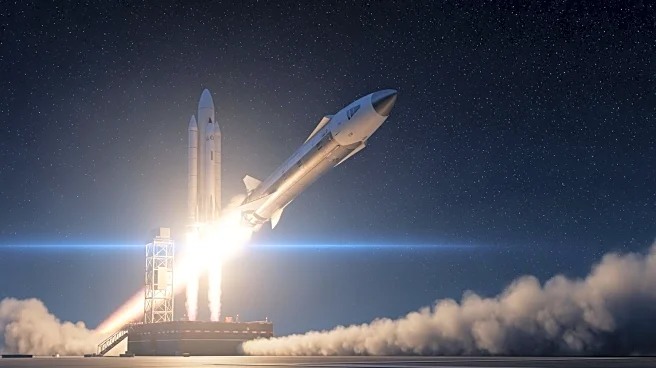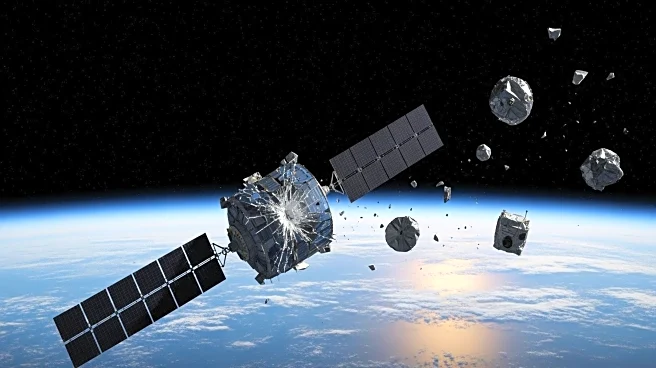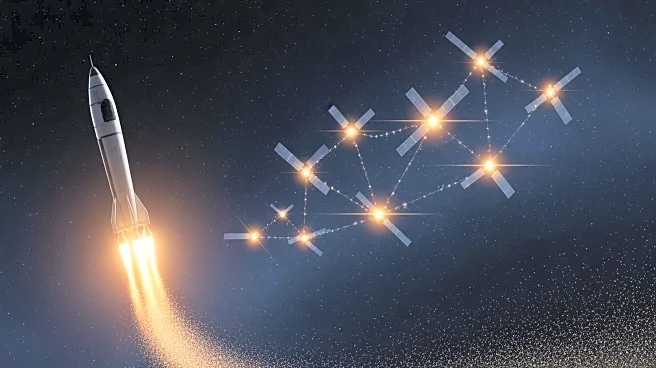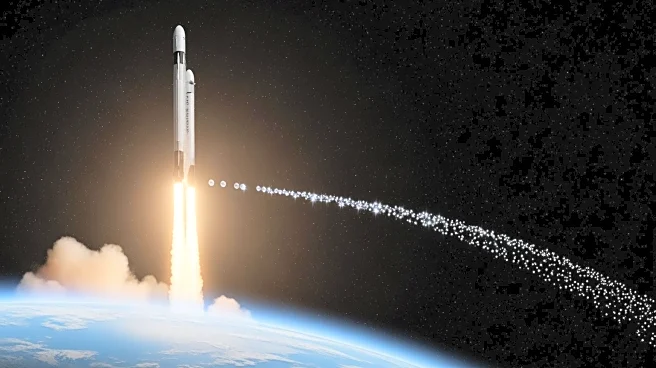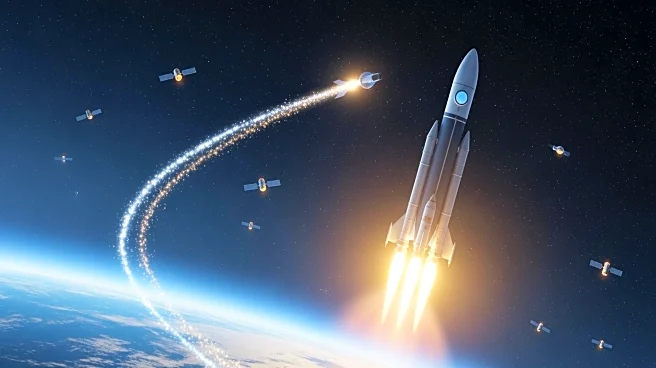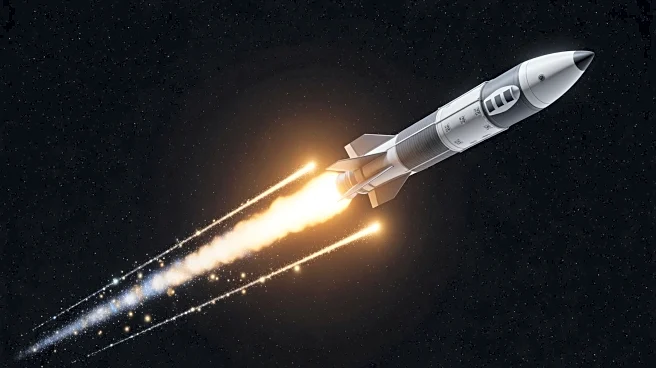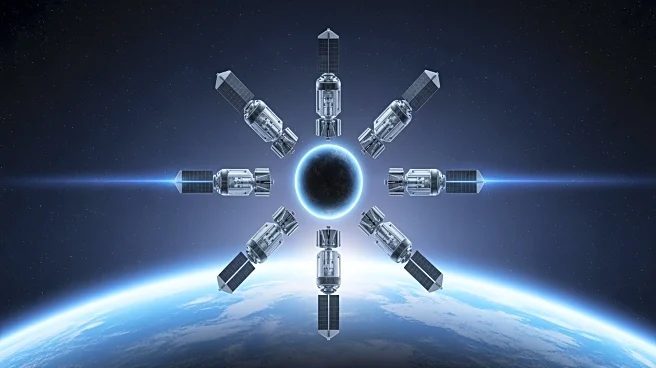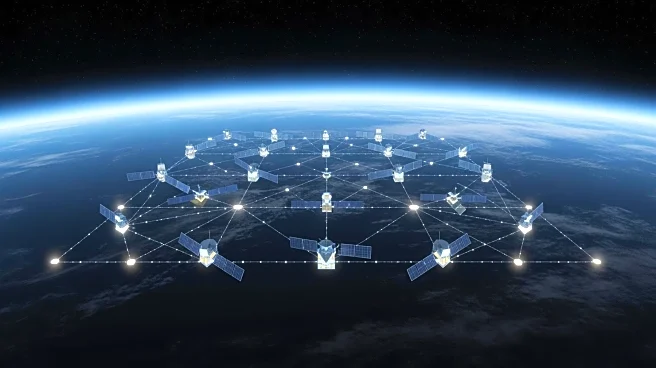What's Happening?
SpaceX successfully launched 28 Starlink broadband satellites on October 27, 2025, from Vandenberg Space Force Base in California. The launch was conducted using a Falcon 9 rocket, which lifted off at 8:43
p.m. EDT. The rocket's first stage returned to Earth approximately 8.5 minutes after launch, landing on the SpaceX drone ship 'Of Course I Still Love You' in the Pacific Ocean. This marked the 17th flight for this particular booster, designated 1082. The upper stage of the rocket continued to transport the satellites to low Earth orbit, where they were deployed about an hour after launch. This mission was the 137th Falcon 9 launch of the year, with 98 of those flights dedicated to expanding the Starlink megaconstellation, which is the largest satellite network ever assembled.
Why It's Important?
The launch of additional Starlink satellites is significant as it continues to expand SpaceX's global broadband network, aiming to provide internet access to underserved and remote areas worldwide. With over 10,000 Starlink satellites launched to date, nearly 8,750 remain active in low Earth orbit, contributing to the growing megaconstellation. The expansion of this network is expected to enhance internet connectivity, offering high-speed internet services to regions with limited infrastructure. This development is crucial for bridging the digital divide, promoting economic growth, and improving access to information and communication technologies globally.
What's Next?
SpaceX plans to further increase the size of the Starlink megaconstellation, potentially adding another 30,000 satellites over the coming years. This expansion will likely improve the network's capacity and coverage, enhancing internet service quality and reliability. As SpaceX continues to break its single-year launch records, the company is expected to maintain its momentum in satellite deployment, further solidifying its position in the space industry. Stakeholders, including governments and telecommunications companies, may respond by exploring partnerships or regulatory measures to integrate and manage the growing satellite network.
Beyond the Headlines
The rapid expansion of the Starlink network raises questions about space traffic management and the long-term sustainability of satellite constellations. As the number of satellites in orbit increases, concerns about space debris and collision risks become more prominent. Additionally, the deployment of such a vast network may influence global telecommunications policies and competition, potentially reshaping the industry landscape. Ethical considerations regarding the impact on astronomical observations and the night sky visibility are also part of the ongoing discourse.
